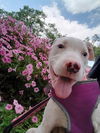Welcome to Pet Rescue By Judy!
401 South Laurel Avenue
Sanford, FL 32771
(407) 302-4497
info@petrescuebyjudy.com
Marley the Basset's Web Page
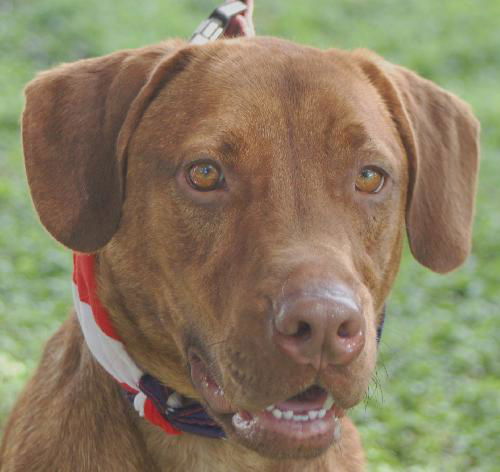
| My Rescue |
| Login to Remember your Favorite Animals and Breeds! |
Marley the Basset needs a caretaker or foster!
Won't you consider helping him get a new start?
Won't you consider helping him get a new start?
Name: Marley the Basset
Status: Adopted!
Adoption Fee: $150
Species: Dog
Breed: Basset Hound / Labrador Retriever (short coat)
Learn more about the Basset Hound.Learn more about the Labrador Retriever.
Color: Chocolate
Sex: Male (neutered)
Current Size: 45 Pounds
General Potential Size: Medium
Current Age: 18 Years (best estimate)
Activity Level: Moderately Active
Indoor or Outdoor: Indoor Only
Good with Dogs: Yes
Microchipped: Yes
Description:
Marley is one of my favorite breeds ~Half Basset. You only want half Bassets because they are notoriously stubborn, so half is about all you can take. I know from whence I speak ~ I have two Basset mixes (thanks Judy!). They always cause people to look twice because they are so unexpected. I mean, look at Marley. When he is laying down he looks exactly like a Lab, size and all. But then when he stands up you see that nothing happens and he's half Basset! Gotta love those legs!
Marley was found on the streets up at Paw Park in Sanford. He was microchipped and neutered but when we contacted the owner they said they had given the dog to someone else and did not want him back! Poor guy! He is such a lover and enjoys being with dogs and people alike. Honest, if you've never been around a Basset mix, you just have to meet Marley. Or if you've always wanted a lab but don't have the space, again, the perfect dog! Marley it is!!!!
Volunteer update: Marley is such a great dog, so loving and active. He especially loves water and jumps around in the baby pool outback all day long. He also LOVES the hose and likes to be sprayed in the face with it on hot day! He is so great with other dogs and loves to wrestle! Anyone would be lucky to adopt him!
According to www.dogbreedinfo.com, the name Basset Hound comes from the French word "bas" meaning low. Some sources suggest the Basset Hound may have originated from genetic dwarf dogs presented in litters of other types of French hunting hounds, however, we do know that it is a rather old breed, descended directly from the Bloodhound. Shakespeare described the Basset Hound with the following poetic image: "Ears which sweep away the morning due." According to research, the true fame of the Basset Hound began in 1863, when it was presented at the Paris Dog Show. Its popularity spread to England where a lively dispute arose between two factions of breeders: Those who wanted to keep the Basset Hound a hunting dog, and those who wanted to transform it into a companion dog. Situated between these two factions were the American breeders who proceeded to develop an extremely pleasing companion dog without sacrificing any of the qualities of the hunter. The breed was recognized by the American Kennel Club in 1885. Its natural bent is for hunting both in the den and in the open. It is therefore, used for the hunting of fox, hare, opossum, and pheasant. Bassets can hunt in packs or alone. It has an excellent sense of smell, but its reflexes are a bit slow. Their slow pace is convenient for hunters on foot and keeps game from being scared out of reach. The Basset's nose is almost as outstanding as the Bloodhound's. George Washington may have owned Basset Hounds given to him by Lafayette after the American Revolution. The Basset Hound is sweet, gentle, devoted, peaceful and naturally well-behaved. They fit into family life well. Their temperament should always be friendly with never an indication of sharpness or viciousness. They are mild but not timid; very affectionate with its master and friendly with children. It is incapable of biting, but it may be a bit stubborn. They like to do tricks for food. It has a deep musical bark. Housebreaking is difficult, but they do well with gentle patient training and positive reinforcement. With proper training, they are obedient, but when they pick up an interesting smell, it's sometimes hard to get their attention. They have a life expectancy of 10-12 years.
Marley was found on the streets up at Paw Park in Sanford. He was microchipped and neutered but when we contacted the owner they said they had given the dog to someone else and did not want him back! Poor guy! He is such a lover and enjoys being with dogs and people alike. Honest, if you've never been around a Basset mix, you just have to meet Marley. Or if you've always wanted a lab but don't have the space, again, the perfect dog! Marley it is!!!!
Volunteer update: Marley is such a great dog, so loving and active. He especially loves water and jumps around in the baby pool outback all day long. He also LOVES the hose and likes to be sprayed in the face with it on hot day! He is so great with other dogs and loves to wrestle! Anyone would be lucky to adopt him!
According to www.dogbreedinfo.com, the name Basset Hound comes from the French word "bas" meaning low. Some sources suggest the Basset Hound may have originated from genetic dwarf dogs presented in litters of other types of French hunting hounds, however, we do know that it is a rather old breed, descended directly from the Bloodhound. Shakespeare described the Basset Hound with the following poetic image: "Ears which sweep away the morning due." According to research, the true fame of the Basset Hound began in 1863, when it was presented at the Paris Dog Show. Its popularity spread to England where a lively dispute arose between two factions of breeders: Those who wanted to keep the Basset Hound a hunting dog, and those who wanted to transform it into a companion dog. Situated between these two factions were the American breeders who proceeded to develop an extremely pleasing companion dog without sacrificing any of the qualities of the hunter. The breed was recognized by the American Kennel Club in 1885. Its natural bent is for hunting both in the den and in the open. It is therefore, used for the hunting of fox, hare, opossum, and pheasant. Bassets can hunt in packs or alone. It has an excellent sense of smell, but its reflexes are a bit slow. Their slow pace is convenient for hunters on foot and keeps game from being scared out of reach. The Basset's nose is almost as outstanding as the Bloodhound's. George Washington may have owned Basset Hounds given to him by Lafayette after the American Revolution. The Basset Hound is sweet, gentle, devoted, peaceful and naturally well-behaved. They fit into family life well. Their temperament should always be friendly with never an indication of sharpness or viciousness. They are mild but not timid; very affectionate with its master and friendly with children. It is incapable of biting, but it may be a bit stubborn. They like to do tricks for food. It has a deep musical bark. Housebreaking is difficult, but they do well with gentle patient training and positive reinforcement. With proper training, they are obedient, but when they pick up an interesting smell, it's sometimes hard to get their attention. They have a life expectancy of 10-12 years.
Other Pictures of Marley the Basset (click to see larger version):
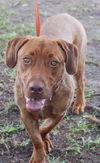 63.1k |
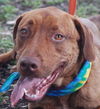 43.9k |
 33.6k |
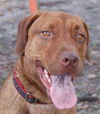 40.7k |
 33.8k |
 57.9k |
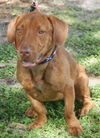 66.6k |
Copyright © Pet Rescue by Judy
